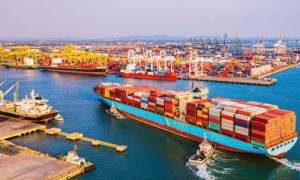Governments worldwide have responded to the COVID-19 crisis by ramping up public spending and rolling out emergency fiscal response measures in an effort to bolster healthcare systems, strengthen social protection, and boost the economy. By November 2020, more than $25 trillion in financial support was announced by Asian countries to combat the pandemic. At the same time, tax collections are declining everywhere.
Even prior to the pandemic, tax revenues in many Asian developing countries were below the level needed to achieve the Sustainable Development Goals (SDGs). The COVID-19 pandemic has driven these revenues further down, and brought socio-economic hardship on a scale not seen before.
This is expected to push tens of millions of people in the region into extreme poverty, sharpen pre-existing inequalities and roll back decades of progress on sustainable development. How can governments finance the response to these challenges?
Governments will need to raise taxes once the pandemic abates. A possible solution lies in taxing property and wealth. Over the past two decades, the Asia-Pacific region has undergone a remarkable economic transformation. However, it has also brought with it a surge in income inequality.
A widening wealth gap between the “haves” and the “have-nots” and the concentration of wealth and power in the hands of a few, could erode social cohesion, threaten political and economic stability and, consequently, undermine investors’ confidence.
Inequality also makes a greater proportion of the population vulnerable to external shocks and possibly deepens pockets of poverty. Taxing the wealthy, many of whose incomes have been largely unaffected or even enhanced by the crisis, needs to be part of the solution.
To this end, taxes on property, such as recurrent taxes on immovable property, recurrent taxes on net wealth, taxes on estates, inheritances and gifts, as well as progressive income taxes should be considered as part of countries’ medium and long-term revenue strategies.
Asian developing countries are addressing a range of necessary tax reforms in their strategies for domestic resource mobilization and
international tax cooperation.
Our latest study, Mapping Property Tax Reform in Southeast Asia, offers broader insight into the performance of recurrent immovable property taxes, which are defined as taxes payable regularly, usually each year, for the use or ownership of land, buildings or other structures.
Our study looked at Cambodia, the Philippines, Thailand and Viet Nam, and found that the scope for raising revenue by increasing taxes is noticeably clear. Property tax reforms in these countries can contribute to broader government strategies, and can benefit from coherence with other systems, as well as government functions related to land management.
While some of these revenue enhancing reforms were put on hold in 2020 (with Thailand significantly reducing the impact of the newly introduced Land and Building Tax), the reforms, and their effective implementation, have now acquired a renewed sense of urgency.
In the Philippines, for instance, the government is embarking on the Real Property Valuation and Assessment Reform program, which will usher in efficient, transparent, and equitable real property valuation and transaction systems at the Bureau of Local Government Finance. It is estimated to yield incremental real property tax collections at local government units by 25% in 2023 onwards.
Other Asian developing countries are using this analysis as a basis to compare, evaluate and improve the performance of their property taxation systems and to engage in broader policy discussions on reform opportunities.
The opportunity to enhance revenue mobilization is not limited to property taxation. Indeed, Asian developing countries are addressing a range of necessary tax reforms in their strategies for domestic resource mobilization and international tax cooperation.
Renewed efforts will be important to combat tax evasion and avoidance and to improve compliance and administrative efficiency. The challenges however will not stop here and over the longer term a revenue reform strategy will have to recognize how to address other challenges such as COVID-19, the climate change crisis, economic inequality, and the digital divide.
The COVID-19 pandemic has created unprecedented fiscal challenges. But it also presents opportunities for a fairer, more efficient and more robust tax revenue and spending system.




















